|
For me, there is nothing like pouring a glass of wine that not only sates my palate but can also conjure up sweet memories. And this quote from Coppo says it perfectly. “We like to imagine our wines leave an emotional aftertaste. This doesn’t have anything to do with its aromas or flavors, but of a sensation that awakens memories of pleasant times.” Piero Coppo founded Coppo winery in 1892 and it is one of the oldest family-run wineries in Italy spanning four generations. Piero’s philosophy was about making quality wine, not quantity. His sense of ethics, attention to detail, perfection, passion for the land and his vision for the future have been passed on from one generation to the next. Below is a photo of the four brothers representing the third generation with fourth-generation Luigi in the middle. This historic winery is located in the famous commune of Canelli, a subzone in the province of Asti in the Piedmonte region of Italy. Canelli is noted for its important role in history for being the birthplace of Italian sparkling wine made with Moscato Bianco grapes. Canelli became a UNESCO World Heritage Site in June 2014 and it is famous for its surrounding historic vineyards and intricate subterranean wine cellars called “Underground Cathedrals”. These cellars weave in and out of Canelli for about 20 miles. Part of these historical wine cellars are located at Coppo Winery and are a UNESCO World Heritage site. While visiting Coppo a few months ago, fourth-generation Luigi Coppo gave us a tour of these impressive cellars. He said, “In parts of this tunnel there are over 42 meters of dirt above us. The tunnels are ideal for storing wine because it is stable in here with constant and perfect temperature and humidity. This all-natural tunnel was built in the late 18th century with an addition in 1920 that took only one week to build”! Below is a slideshow of the Underground Cathedrals. Photo credit: Penny Weiss Coppo built their business producing sparkling wines, but by the beginning of the 20th century, their production expanded to making classic Piedmontese reds, most notably, Barbera. Piero’s son, Luigi (second generation) entered the business in the late 1940s and was responsible for restoring and modernizing the winery. He also brought with him a passion for French wine. During the 60s and 70s, the winery began importing wines from Burgundy and Champagne. Luigi’s four sons (third-generation) entered the family business between the 70s and 80s). Inspired by the great French wines that their father imported, the four brothers infused their personal style in the production of Metodo Classico sparkling wines and Chardonnay. Coppo is one of the first producers in the area to make Chardonnay, although Chardonnay and Pinot Nero have been growing in the hills around Canelli since the early 1800s. Monteriolo Chardonnay is dedicated to their father Luigi and the first vintage was introduced in 1984. Here is a bottle shot of the 2017 Monteriolo Chardonnay that I tasted while at the winery. It was exquisite! Unlike many other wineries, the third generation made it their mission to maintain the quality of Barbera over quantity and ensure that its elegant character was preserved. This brought about a change for stricter management in the vineyards, lower yields, hand harvesting and introducing barriques during maturation, making Coppo at the cutting edge of Barbera’s rebirth. These changes helped to give the wines more complexity and richness. The 1984 Barbera d’Asti Pomorosso was the first harvest, becoming the symbol of the winery. The fourth-generation, cousins Max and Luigi, are focusing on “a new style of communication”, called the Internet! By engaging the younger generation of wine lovers while blending “a lighter side of wine” with traditional values they hope to introduce their palates to affordable and quality wine. Today, the major part of Coppo production is focused on Barbera, Metodo Classico sparkling wines, Chardonnay and Moscato d’Asti. Coppo also makes classic DOCG Piedmontese wines such as Gavi and Barolo. It is interesting to note that due to the winery’s historical importance, they have been granted permission to make Barolo outside of its zone of production. The Coppo estate covers over 52 hectares of vineyards with the heart of productive vineyards in Monferrato in Southern Piedmont. Here is where Moscato Bianco and Pinot Nero are grown. Barbera grapes are grown in Agliano Terme and Castelnuovo Calcea located in the heart of the subzone, Nizza. Coppo also manages the estate La Rocca situated in Monterotondi di Gavi, where the Cortese grapes are grown. As stated by Coppo, “Since 2001, Coppo winery has followed an official protocol for integrated agriculture that sustains farming practices with low environmental impact. The winery goes above and beyond the regulations, and for several years now has decided to follow agricultural methods in the spirit of organic and biodynamic agriculture, while not being officially certified.” I asked Luigi how climate change might be affecting vineyards and production. His reply, “Climate change exists and of course, it is impacting our vineyards and production. What we are experiencing in the last years is an anticipated ripeness of our grapes, which means an anticipated harvest. It does not mean this is worse or better but we have to follow nature. We are experiencing higher temperatures now and that means higher alcohol. But please consider alcohol is not a problem if the wine is well balanced. For some specific varieties such as Barbera, we cannot control or decide what is the right amount of alcohol because we have to manage the acidity and so we have to pick the grape when the grape is ripe. We can pick grapes earlier but it won’t work out well.” I asked Luigi what the biggest challenge Coppo might be facing in the vineyards. He responded, “There is not a specific challenge. According to my father and uncles stories back in the day, the harvest season was more or less predictable. Today it is different and we have to “react” quickly. Every day is different and every harvest (thank god) is different too.” Upon my return home from visiting the Coppo estate, I received six bottles of their wines. The wines transported me back to Canelli “awakening memories of a special time.” These wines are all gems and worthy of review. Coppo Moncalvina Moscato D’Asti DOCG 2018 This wine is made with 100% Moscato Bianco di Canelli. It is a light, sweet wine with floral and stone fruit aromas that transcend to the palate. It has a natural light fizziness and is very refreshing. Alcohol: 5% SRP: $15 Coppo Costebianche Chardonnay 2017 This is 100% Chardonnay that is harvested from Piemonte DOC appellation. 20% of the must is fermented and aged on fine lees in French oak barrels of 2nd and 3rd-year use. This is a delightfully fresh and fragrant wine with notes of floral, stone fruit, apple and a hint of lemon. Alcohol: 12.5% SRP: $20 Coppo La Rocca Gavi DOCG 2018 Gavi is a classic white Piedmontese wine made with 100% Cortese grapes. Cortese is one of the region’s oldest native grapes. The Tenuta La Rocca vineyard has marly calcareous soils that contribute to the wine’s mineral complexity. Fresh aromas of citrus, peach and pineapple lead to a palate of minerality, grapefruit, green apple, honeysuckle and a nice balance of fresh acidity. Alcohol: 13% SRP: $20 Coppo L’Avvocata Barbera D’Asti DOCG 2018 This wine is made with 100% Barbera. Wonderful aromas of juicy red berries and spice tickle the nose with a palate full of lively acidity, cherry, berries, pomegranate, spice and a hint of nutmeg. Raspberry and spice linger on a long finish. Alcohol: 14.5% SRP: $17 Coppo Camp Du Rouss Barbera D’Asti DOCG 2016 I love the story that goes with the name of this wine. “Camp del rosso” in Italian means “the redhead’s field”. ‘Camp’ in Piedmontese means vineyard. The first owner of this vineyard was a redheaded man who was so burly, he frightened the children. However, the wine is far from frightening! It is 100% Barbera that has been aged in French oak barrels for 12 months. Intense aromas of red fruit and spice lead to a palate of sour cherry, red berries, cranberry, spice and a hint of dark chocolate. This is a well-structured wine that lingers on the palate and begs for another sip. Alcohol: 14.5% SRP: $23 Coppo Pomorosso Barbera D’Asti Nizza DOCG 2016 This wine is the most prestigious Barbera produced by Coppo. Its fame is owed to the significant part it played in the rebirth of this variety. With the release of the 2016 vintage, the wine bottle bears the new Nizza DOCG designation. This took years of collaboration to elevate the status of this vine growing region. The Coppo family along with other prominent Barbera d’Asti producers was involved in this effort and is now proud to represent this new designation. Grapes are sourced from 50 to 60-year-old vines in the Nizza DOCG appellation. The wines are aged from 14 to 18 months in French oak. This is a beautiful wine with nicely integrated tannins and acidity. Intoxicating aromas of red fruit, dark cherry, floral and baking spice segue onto the palate with dark plum, dark berries and a touch of sour cherry, pomegranate and herbs. I tasted the 2017 vintage while visiting Coppo and was reminded of how expressive this wine is. Alcohol: 15.5% SRP: $55 Every wine bottle is adorned with the symbol of a cherub. While visiting Coppo I photographed the statue, which sits on a shelf in their tasting room. I asked Luigi what its significance is. Luigi said, “This is a gift given from a sculptor to my great grandfather at the very beginning of the 20th century. It is a little angel (Cupido) trying to stop the fermentation of a bottle of sparkling wine (gran spumante). It became the logo and mascot of the winery.” Of course, I was secretly hoping that the cherub was trying to capture the aromas and essence of the sparkling wine! Although I couldn’t capture it on camera, the family motto is engraved at the cherub’s feet. “Robur et salus” (strength and health). Tasting all of these wines again was a treat for my palate. And it was wonderful to be briefly transported back to Piedmonte. Coppo definitely got it right when they said, “We like to imagine our wines leave an emotional aftertaste.” They certainly do! Until next time…
Cheers! Penina To leave a comment or if you have an inquiry, please contact me at [email protected] Comments are closed.
|
Categories
All
|

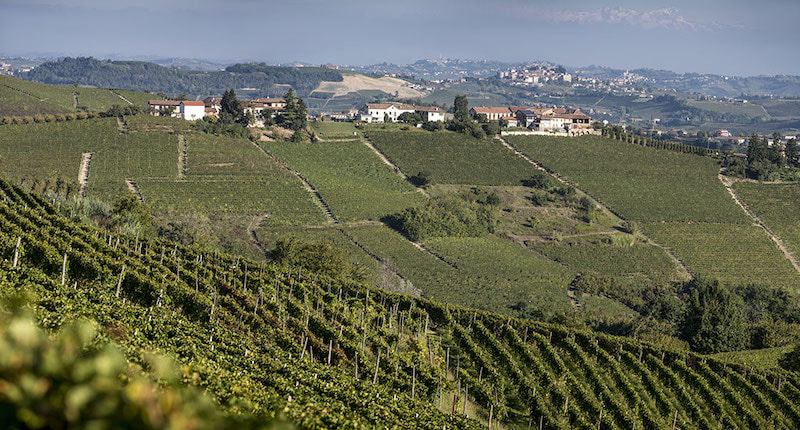
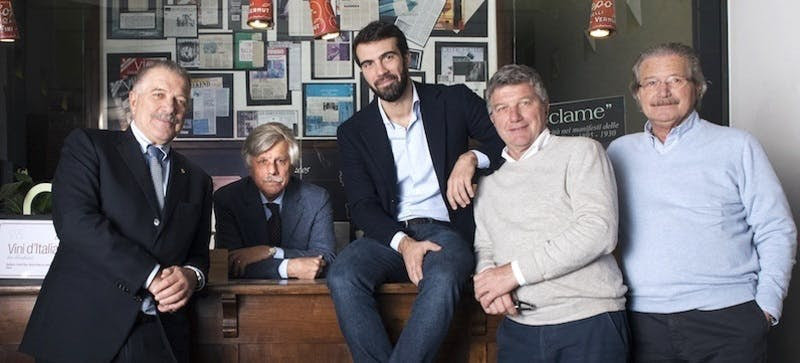

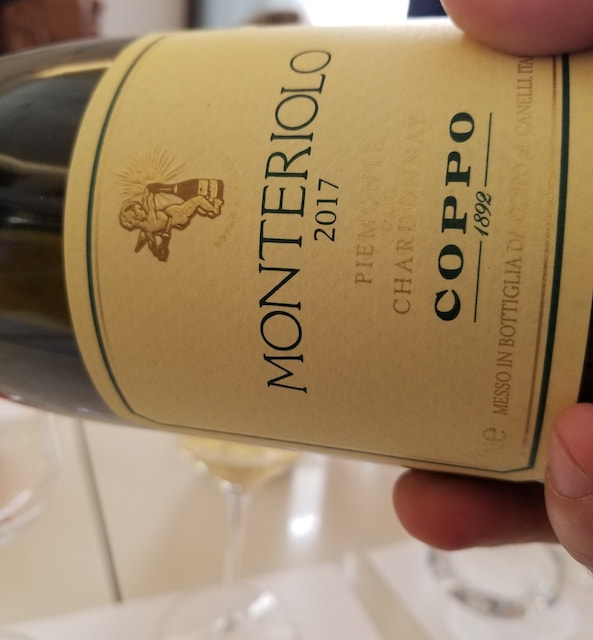
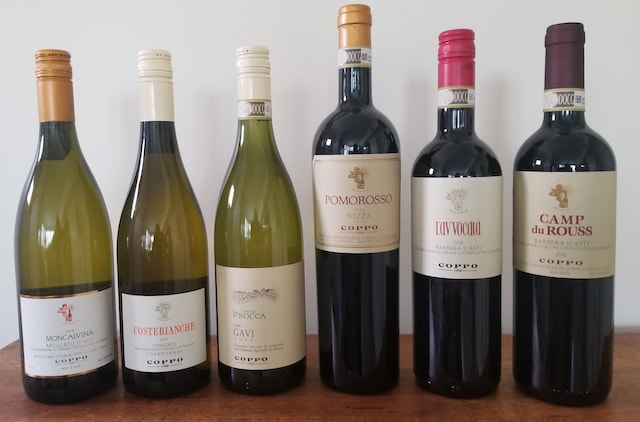
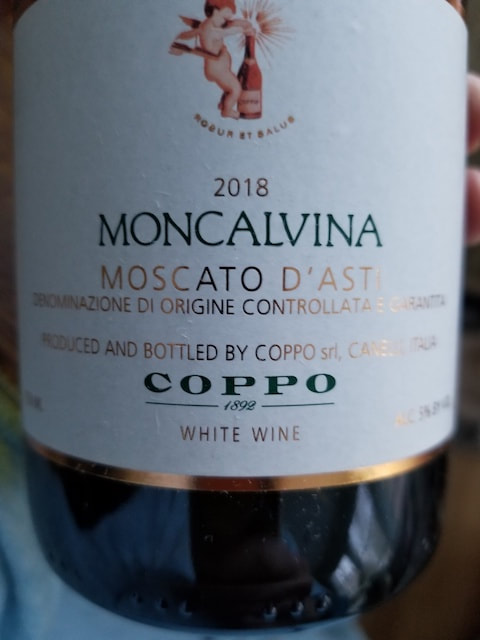
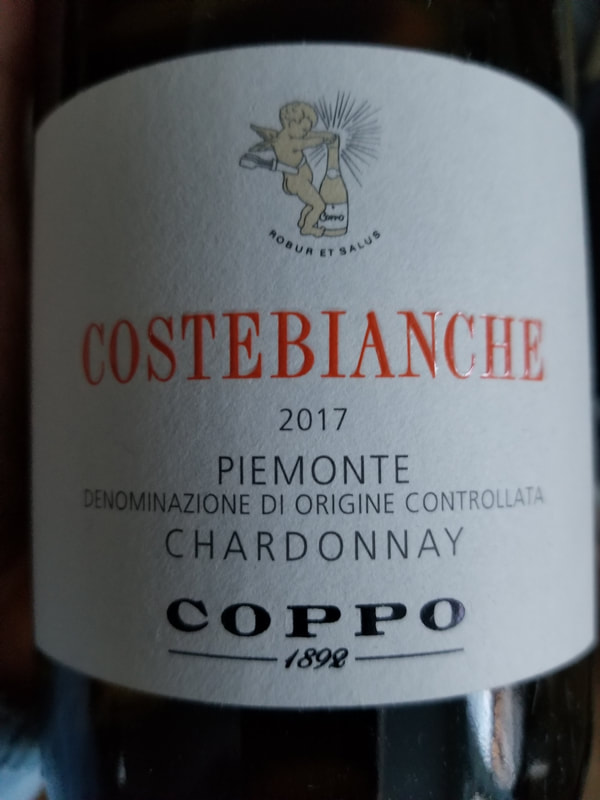
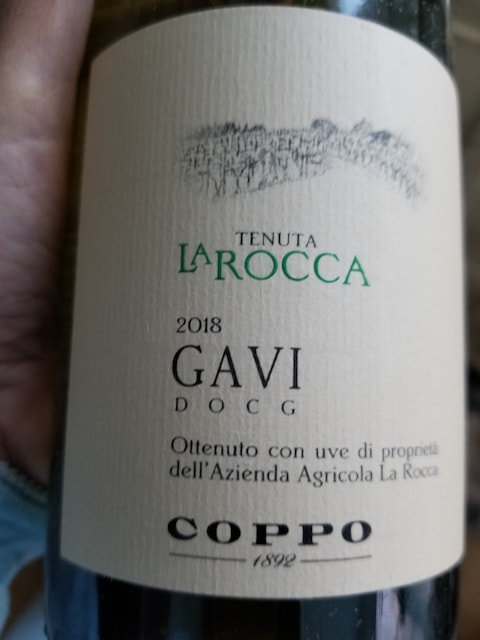
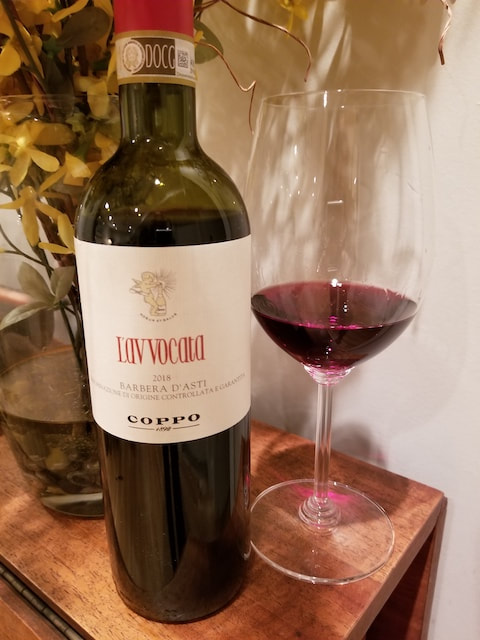
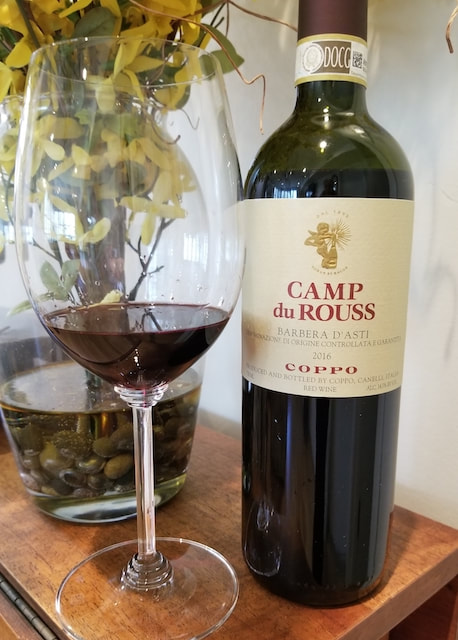
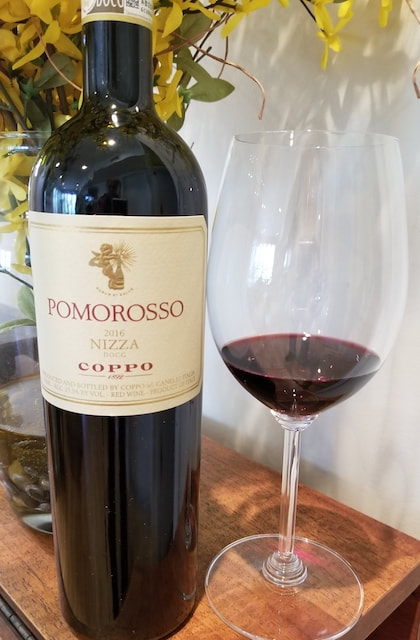
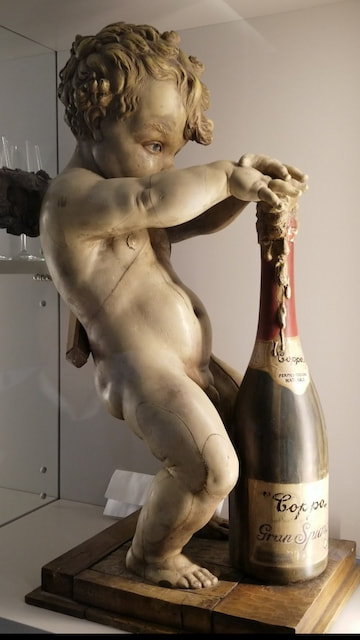
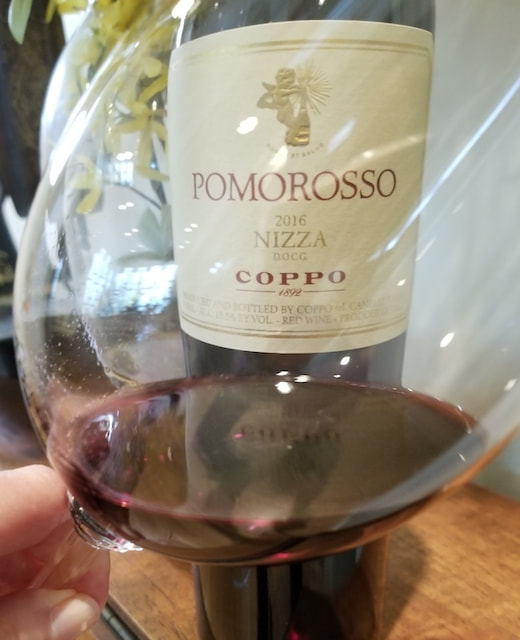
 RSS Feed
RSS Feed